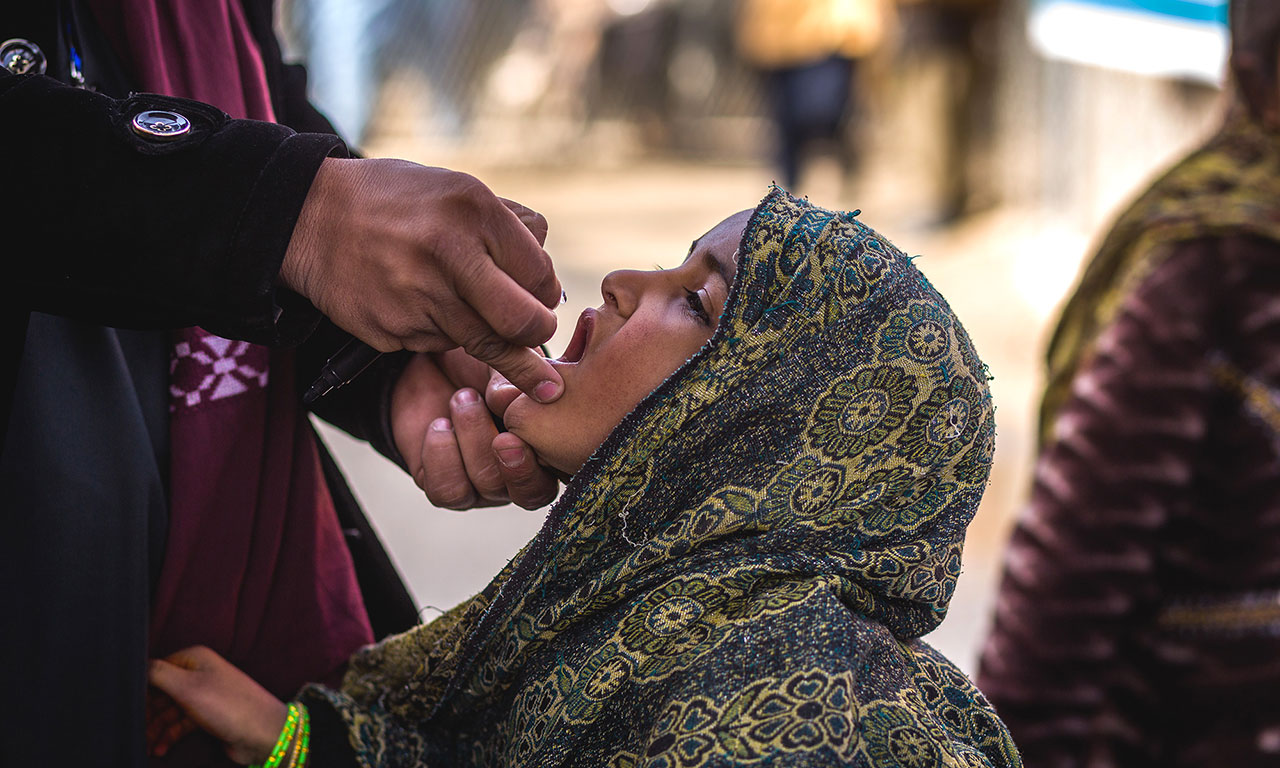In 1988, the World Health Assembly (WHA) declared its commitment to polio eradication. The Global Polio Eradication Initiative (GPEI) was tasked with ridding the world of a dreaded disease by improving disease surveillance and vaccination.
It was a tall order. Thirty years ago, there were 350,000 cases of wild polio virus (WPV) recorded in 125 countries. By the end of 2018, just 33 cases were identified – all of which were found in Afghanistan and Pakistan.

© Jim Huylebroek/UNICEF
As the WHA meets in Geneva this week (20-28 May 2019), the GPEI and its partners are focused on the last mile of a long journey. A new report, Polio Endgame Strategy 2019-2023, puts the spotlight on the actions needed to finish the job, and looks ahead to a post-polio future.
‘The world is on the brink of a historic achievement: the eradication of wild poliovirus,’ the report says. However, it notes a series of risks to global eradication efforts, including insecurity and conflict; weak or fragile health systems; and operational, management and resource risks.
The region where polio persists is among the most challenging in the world for international organisations to operate. Health workers and immunisation teams work in perilous conditions. Last month saw the latest in a spate of attacks by militants in Pakistan.
With the number of cases reduced by 99% since the GPEI was established, polio could become the second human disease to be eradicated. The first, smallpox, was declared ‘dead’ 40 years ago.
The Polio Endgame Strategy sets out three targets for the years ahead. It focuses not only on stopping the spread of the disease but on ensuring that its demise is verifiable and sustainable.
- Goal one: Eradication.
- Interrupt transmission of all wild poliovirus (WPV)
- Stop all circulating vaccine-derived poliovirus (cVDPV) outbreaks within 120 days of detection and eliminate the risk of emergence of future VDPVs
- Goal two: Integration.
- Contribute to strengthening immunization and health systems to help achieve and sustain polio eradication
- Ensure sensitive poliovirus surveillance through integration with comprehensive vaccine-preventable disease (VPD) and communicable disease surveillance systems
- Prepare for and respond to future outbreaks and emergencies
- Goal three: Certification & containment.
- Certify eradication of WPV
- Contain all polioviruses
Despite significant progress on reducing the number of cases, the road to elimination remains a long one. Even if case numbers can be reduced to zero, it will take several years before experts can be satisfied that the disease is gone for good. Not only do they have to be confidence that there are no cases of polio, they must also confident that there are no polio viruses circulating.
Professor David Salisbury, Chair of the Global Certification Commission of the Eradication of Polio, is leading the group that may one day declare polio to be eradicated. He was part of a Global Advisory Group which, more than 20 years ago, set the world on course to wipe out the disease. Now he may become one of six signatories to sign the death certificate of the poliomyelitis. But how will he know when to tell the world that the job is done?
‘We have to prove that there is no polio virus left in the world because the consequences of getting that wrong could be very serious,’ he said in an interview with the Global Polio Eradication Initiative. ‘We have to prove beyond doubt – demonstrated by independent people – that polio has indeed gone, and gone with certainty.’
Every country has to have a national certification committee, independent of the government and of the people running the polio immunisation programme. These committees are experts qualified to state that their country has interrupted polio transmission. This feeds into a regional committee which is in a position to declare that their region is polio free.
While challenges remain, the GPEI is helping the world to inch closer to the goal of polio eradication. If it succeeds, it would be a triumph of global collaboration in tackling a shared problem over several decades – perhaps offering hope that humankind can overcome huge challenges through the right combination of political will, funding and determination.
Read: How will we know when polio is dead?
Read: 5 ways the fight against polio is a fight against other diseases




Kam
October 22nd, 2019
Bunch of lies in your article.
http://polioeradication.org/where-we-work/polio-outbreak-countries/
Gary Finnegan
October 24th, 2019
Please elaborate.